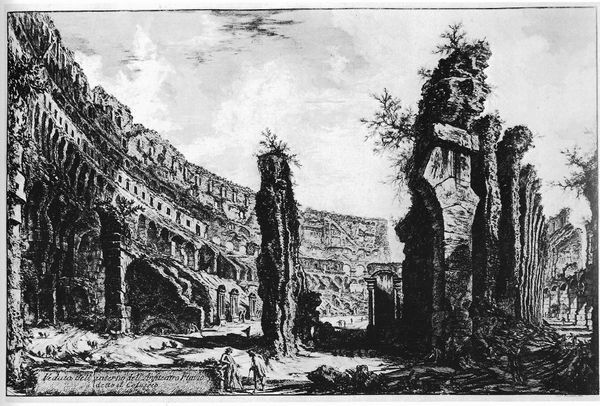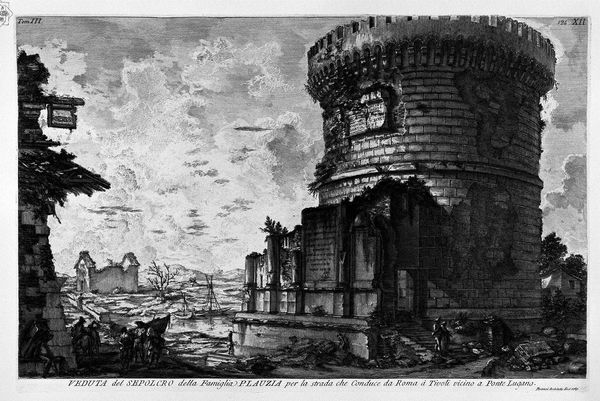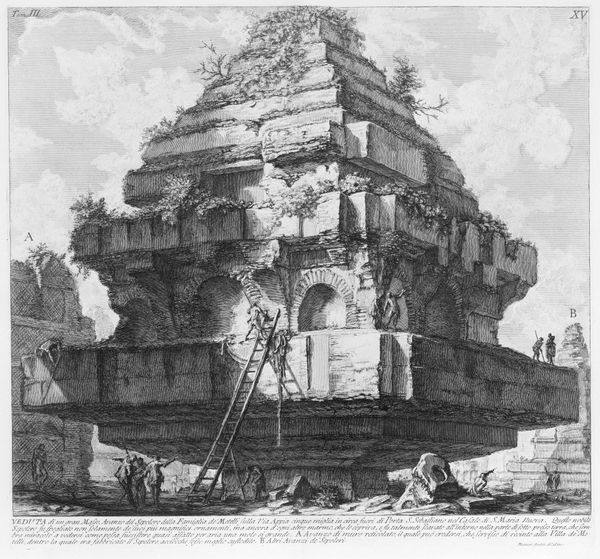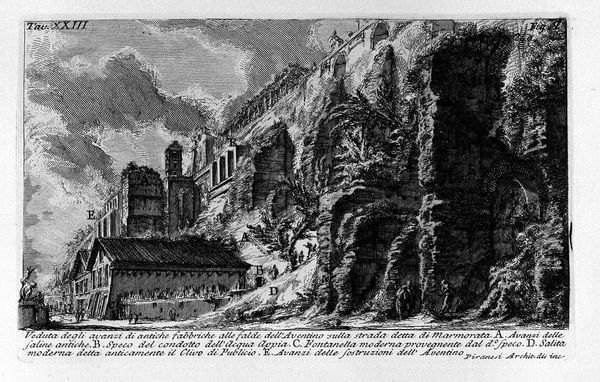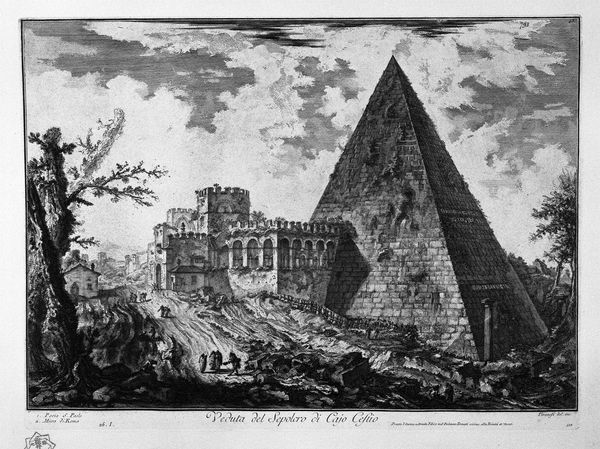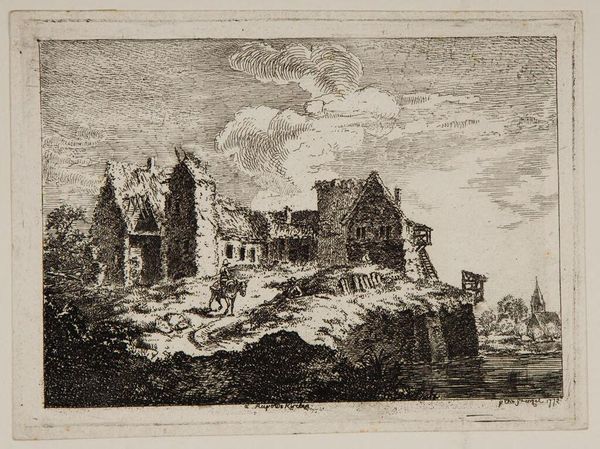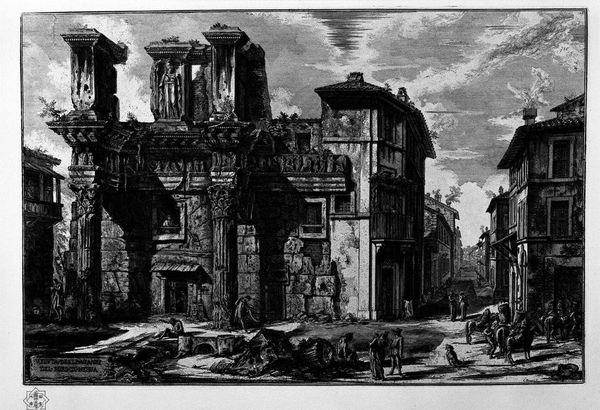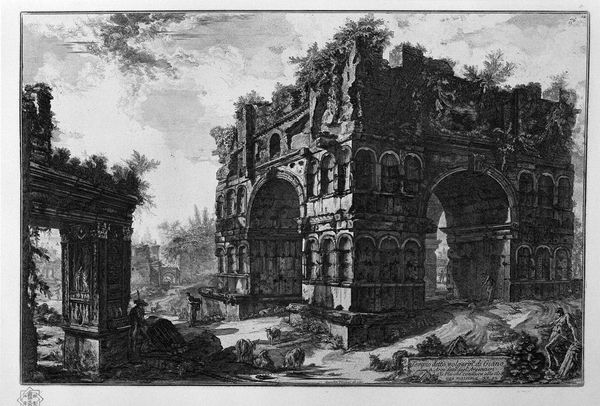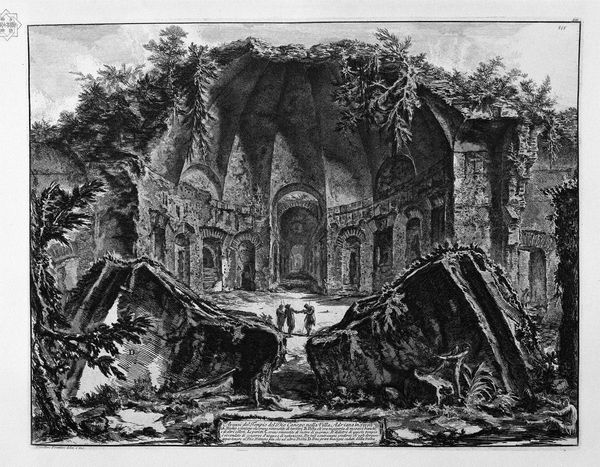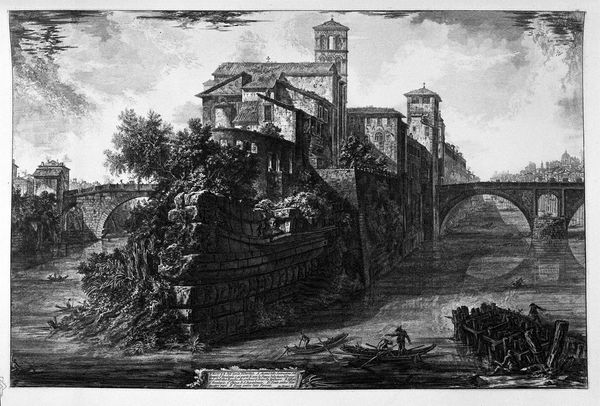
The Roman antiquities, t. 2, Plate XLI. External view of the three rooms before burial. 1756
0:00
0:00
drawing, print, etching, ink, architecture
#
drawing
# print
#
etching
#
landscape
#
ink
#
architecture
Copyright: Public domain
Editor: So, this is "The Roman Antiquities, t. 2, Plate XLI. External view of the three rooms before burial" by Giovanni Battista Piranesi, created in 1756. It's an etching. The scene feels…melancholy, like a grand ruin being slowly swallowed by nature and time. What do you see in this piece? Curator: What immediately strikes me is the artist’s vision of memory and layering. Piranesi presents the antiquity as a kind of palimpsest. Notice how the building isn't just presented as a structure, but as a record. Each stone, each visible scar speaks. The Roman ruins evoke, as you suggest, a melancholic response but do so with dramatic and theatrical force. Does this grandeur speak to the symbols of fallen empire? Editor: I guess so, especially since it focuses on the “rooms before burial”. Burial implies a loss, and also hints at hidden secrets and forgotten stories. Are the people there meant to represent those stories, maybe? Curator: Perhaps they signify more than simple narrative. The figures provide scale and underscore the immense size and age of the structure, true, but I think there is an intentional ambiguity here. The decay and human interaction might point to an understanding of cyclical histories. Buildings crumble, new cultures emerge, and new narratives are constructed. Look at how light and shadow dramatize every feature, urging the viewers to contemplate more than just visual beauty. Do you see any religious elements here? Editor: I do not spot religious symbolism, no, I suppose it makes sense, then, that the artwork’s intent isn’t straightforward, and the symbols are multi-layered in how they reflect both memory and the cyclical nature of societies and architecture! Curator: Indeed! By viewing the past through ruins, Piranesi compels us to recognize the transient nature of human achievement and the persistent echoes of what came before. A powerful, visual meditation.
Comments
No comments
Be the first to comment and join the conversation on the ultimate creative platform.

